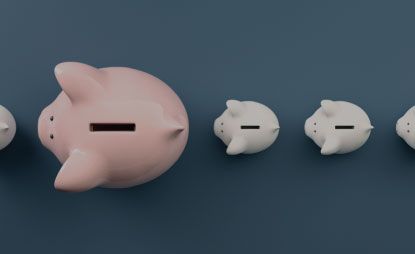In this video, we show you how to record a miscellaneous bank transaction whether that transaction is a payment or deposit.
Transcription
0:00-0:40 Let's take a look at how to record a miscellaneous bank transaction, whether that miscellaneous transaction is a payment or deposit. So these would be payments or deposits that do not result from receiving money from a accounts receivable customer owes you money and it's not part of our regular bank payment when paying a supplier that's already on your books as an accounts payable. So typical examples might be on the payment side, things like miscellaneous wire transfers or bank charges, a very common one. And on the deposit side, you may receive a tax refund from an authority, or may maybe a miscellaneous payment from one of your employees to reimburse for something that they inadvertently expensed or something like that.
0:40-1:40 So these kinds of things happen fairly routine basis. So this one screen deals with all of those things. Firstly to get there bank management menu, activities, miscellaneous transactions. The screen itself is very, very simple. You select your bank account that you're in this case making a payment out of the default type is payment will come back in a moment and deal with the deposit side of things. You can plug in the transaction date. You can plug in a transaction number. So if you're getting sort of your online bank and there's a reference number there, you can plug that in if you want. You can also use this button to create a unique transaction number based on a date and timestamp. You would put in your details here wherever you making this payment two or what it's about. So we'll say bank charge and you also do have the miscellaneous or rather than general Ledger notes field, which is a comments field. So it's a memo field where you could put in detailed litany of information about this bank charge and it would go all the way through the general Ledger.
1:40-2:30 And then you can put in the amount of the transaction. So we'll put in 12 dollars 50 and then of course you can distribute it to the appropriate general Ledger account or accounts. If you are using job costing, you would go through the job code allocation and cost code allocation. If you're not using job costing, then just ignore what I said. Then you would go straight to the GL account where you would specify, either by account description or by account number what the account is and again you can distribute this to multiple lines just like you can on accounts payable voucher. So if we felt that we wanted to take $10 of this as a bank charge, but we wanted to treat the other two $2.50 as something different we could do that as well.
2:30-2:40 And we can distribute this over as many lines necessary and once we're done, we simply process the transaction. Bank account is updated, bank reconciliation screen is updated, general ledger is updated and everything is done in one place.
2:40-3:15 Now let's assume that we received a, for example, a tax refund for a sales tax over remittance and we want to record that. So we would go ahead, same thing, choose a bank account and now we'd have to determine it's a deposit, is this something that was deposited directly into our bank account or was it something we received a check, we have the check, we've not yet gone ahead and put in the bank account. The difference is if we leave it as a deposit to deposit summary screen, you would then have to process this deposit as part of the process deposits together with any checks that you may have processed from accounts receivable customers, maybe any credit card payments if you've received and there is a separate training video on how to use the process deposit screen.
3:15-3:45 In this case, I'm just going to say the money showed up directly in our bank account and the tax authority did the direct transfer into our bank account. So again we can deal with the date, we can put in a transaction number. I'll do the same things I did before. You can put in a description of what this is, You'd more likely put the maybe the jurisdiction involved and then again, you probably put in a note, a note about why you got through the tax refund, what it was all about something. So you got a full order trail.
3:45-4:15 Once again, you put in the amount of the transaction and you go ahead and distribute it down at the bottom. So I'm gonna go ahead and I'm going to use a GL account called miscellaneous. Not necessarily, the most logical account to put a tax refund to, but they have it and it's going to have to be a credit in this case because the money has gone into the bank account and once again I could go ahead and distribute this to a number of differential accounts, but we'll just keep this simple and do the process here.
4:15-5:00 So just to recap, we have now gone ahead and once again updated bank accounts, the Banks sub ledger, it'll show up on the bank reconciliation and everything is complete. So I just like to point out one last little word of warning. This screen is not the appropriate screen to use to record payments that you make to suppliers is already an accounts payable or for that matter, if there are any payments that you receive from customers that are already under accounts receivable, you use the appropriate transaction screens from those modules and this is simply for miscellaneous payments that came directly out of your bank account. You didn't cut a check for them and miscellaneous receipts.










